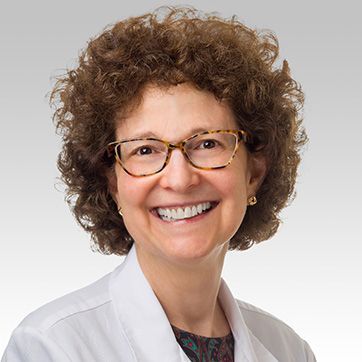Article
Investigators Publish Meta-Analysis of Biologics for Pediatric Psoriasis
Author(s):
Dr. Amy Paller and colleagues noted high efficacy rates and minimal adverse events from biologic therapy.
Amy Paller, MD

A new investigation into the promise of biologics in pediatric patients with moderate-to-severe psoriasis found that the therapy had high efficacy rates and a favorable side effect profile.
In recent years, a myriad of randomized controlled trials had been published which evaluated the safety and efficacy, and infrequent dosing schedule of different biologics in children with psoriasis.
However, no summative review existed.
Amy Paller, MD, Professor and Chair of Dermatology and Professor of Pediatrics at Northwestern University Feinberg School of Medicine, and fellow investigators chose to summarize data from existing randomized controlled trials to assess the safety and efficacy of biologics in the management of pediatric psoriasis.
The Methods
Paller and colleagues first peformed a systematic review and meta-analysis of all available biologic trials on pediatric psoriasis.
Electronic searches were performed using Medline, Embase, PubMed, the Cochrane Central Register of Controlled Trials, and the American College of Physicians Journal Club, from the dates of inception until November 2020.
Eligibility for inclusion in the meta-analysis required completed randomized controlled trials assessing pediatric patients with chronic plaque psoriasis. Additionally, RCTs needed to compare the effect of a biologic agent against placebo or a non-biologic agent.
Efficacy outcomes abstracted were 75%, 90%, and 100% improvements in Psoriasis Area and Severity Index (PASI) after 12-16 weeks of treatment.
Paller and investigators also utilized the physician global assessment *PGA) and Child Dermatology Life Quality Index (CDLQI).
Safety endpoints included the number of patients who experienced 1 or more adverse events (AEs) and the number of patients who experienced 1 or more serious adverse events.
The Findings
A total of 2876 titles, abstracts and trial registry entries were included on the study as well as 2 studies identified from other sources. Studies focused on several biologics including etancercept, adalimumab, ustekinumab, ixekizumab, and secukinumab.
Investigators reported that the odds ratio (OR) of achieving PASI75 at initial follow-up was 12.37 (95% CI: 6.23-24.55) with biologic treatment compared to placebo or a non- biologic agent.
Further, the odds ratio of achieving PASI90 was 14.62 (95% CI: 3.81-56.09) and PASI100 was 22.96 (95% CI: 6.97-75.60) with biologic treatment compared to placebo or a non-biologic agent.
Meanwhile, the odds ratio of achieving PGA 0 or 1 (considered to be minimal psoriasis) was 12.65 (95% CI: 4.85-32.96) and the OR of achieving a CDLQI of 0/1 was 5.26 (95% CI: 3.58-7.72) with biologic treatment, compared to placebo or a non-biologic agent.
Regarding adverse events, the odds ratio at initial follow-up was 0.95 in patients treated with biologics in comparison to placebo or a non-biologic agent, while the odds ratio of a serious adverse event was 1.48.
Finally, Paller and colleagues recorded substantial heterogeneity between trials regarding patients achieving PASI75 and PASI90. The heterogeneity for all other outcomes was moderate or minimal.
“The results of this meta-analysis provide a compelling argument for the use of biologic therapy in pediatric patients with moderate-to-severe psoriasis, as a highly efficacious therapy with a good safety profile at initial follow-up of 12-16 weeks,” the team wrote.
The study, “Biologics for pediatric psoriasis: A systematic review and meta-analysis,” was published online in Pediatric Dermatology.





